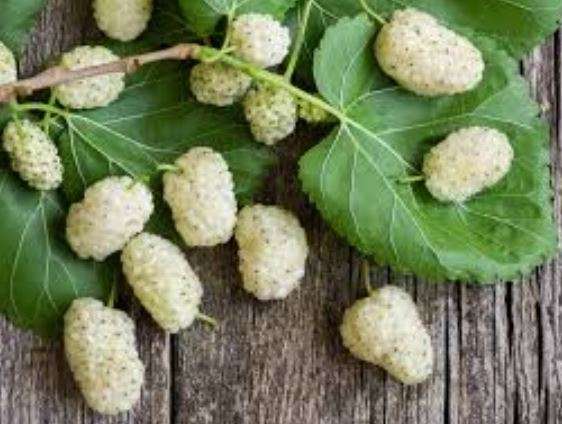



White Mulberry - Morus Alba" - 30 Seeds
Check my rate
| Main centres: | 1-3 business days |
| Regional areas: | 3-4 business days |
| Remote areas: | 3-5 business days |




| Main centres: | 1-3 business days |
| Regional areas: | 3-4 business days |
| Remote areas: | 3-5 business days |
White mulberries, botanically classified as Morus alba, are an Asian species belonging to the Moraceae family. The small, sweet fruits grow on deciduous trees reaching 10 to 20 meters in height and are a fast-growing species easily adaptable to regions worldwide.
Historically, White mulberries are known as the sole food source of silkworms to encourage silk production, but over time, the species has become favored among foragers for its mild, sweet fruits. White mulberries will naturally fall off the tree when ripe, and the fruits can also be hand-picked for use in sweet or savory culinary preparations. The fruits are not commercially produced as they squish and bruise easily and have a short shelf life, but they are found through local markets as a specialty ingredient, sometimes labeled as Silkworm mulberries and Asian mulberries.
White mulberries are a source of potassium to balance fluid levels within the body, fiber to regulate the digestive tract, and vitamin C to strengthen the immune system while reducing inflammation. The fruits also provide vitamin E to protect the cells against the damage caused by free radicals, iron to develop the protein hemoglobin for oxygen transport through the bloodstream, vitamin K to assist in faster wound healing, and other nutrients, including folate, manganese, vitamin A, B vitamins, and riboflavin. Young White mulberry leaves have some calcium to build strong bones and teeth, zinc to boost immunity, and iron. In Traditional Chinese Medicine, White mulberries are valued for their anti-inflammatory properties and are used to reduce fatigue, lower fevers, assist in symptoms associated with anemia, and soothe sore throats. The species is also used to purify the blood.
GROWING GUIDE INCLUDED